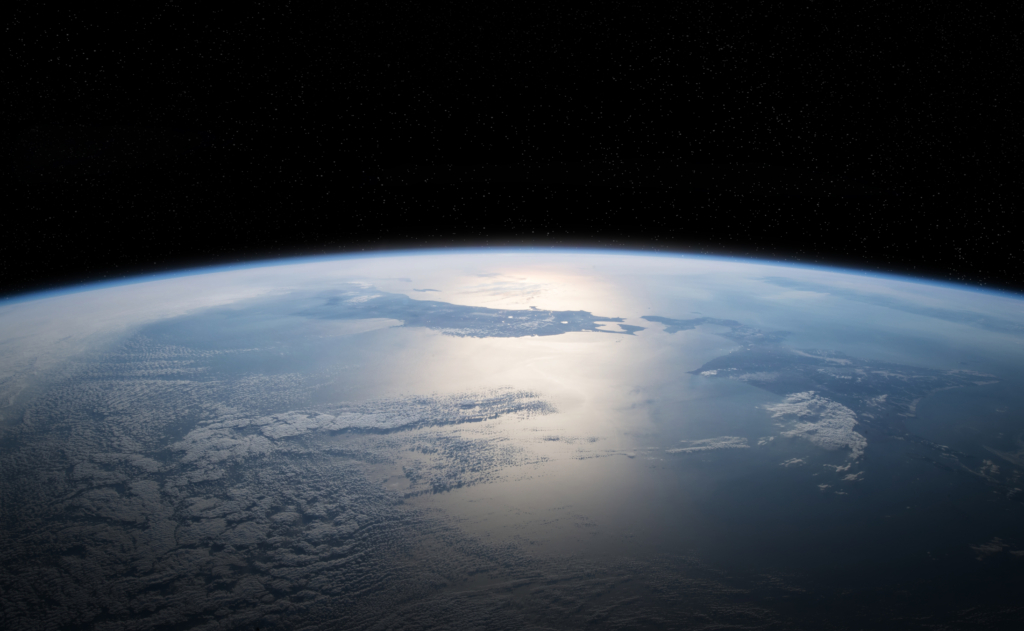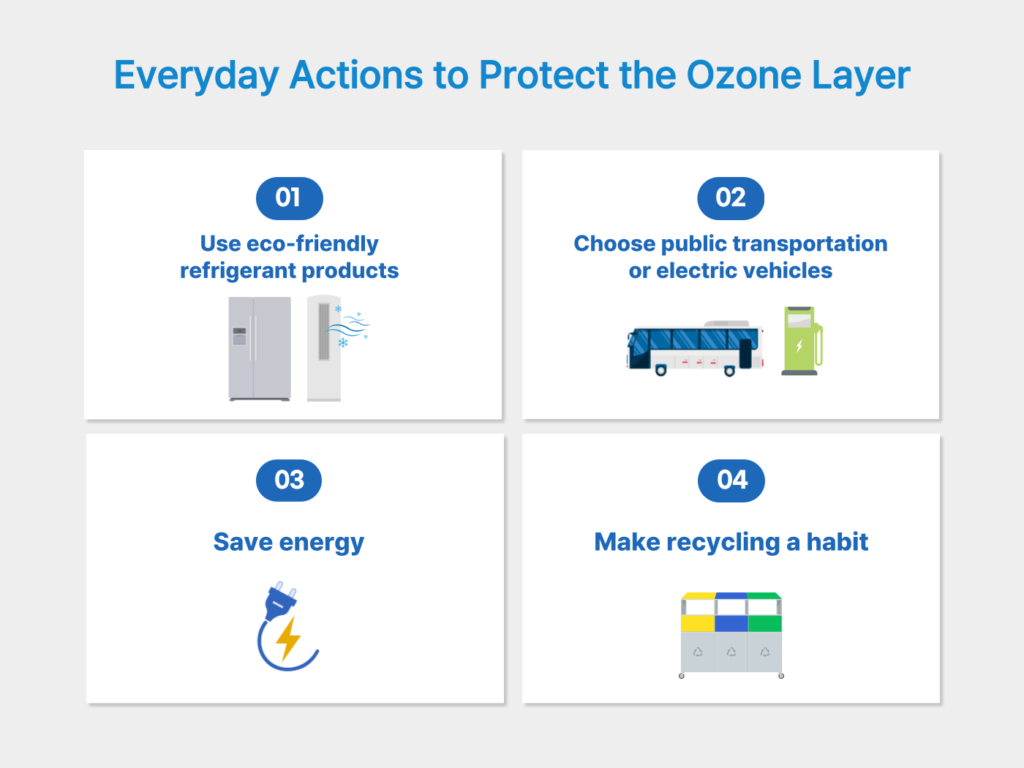Save Our Zone! International Day for the Preservation of the Ozone Layer – A Promise to Protect Our Planet
2025.09.16
🔍 Every year on September 16, the world observes the International Day for the Preservation of the Ozone Layer. Through the Montreal Protocol and the Kigali Amendment, the international community has worked to regulate ozone-depleting substances. Yet, refrigerants used in daily life and industrial emissions of N₂O and VOCs continue to threaten the ozone layer.
This article marks the occasion by exploring practical measures to protect the ozone layer and highlighting the industrial solutions enabled by Heesung Catalysts’ technologies.
The Ozone Layer: Earth’s Protective Shield
The ozone layer is a thin band in the stratosphere, located about 10–50 km above the Earth’s surface. It acts as a shield, absorbing harmful ultraviolet radiation (UV-B and UV-C) from the sun. According to Korea’s Ministry of Environment, a 1% decrease in ozone concentration results in a 2% increase in UV radiation reaching us—raising the risk of skin cancer by about 4% and cataracts by 0.6%.
When the ozone layer weakens or is destroyed, the consequences extend far beyond human health, leading to reduced crop productivity, disruptions in marine ecosystems, and widespread harm to both people and nature. Protecting the ozone layer is therefore not just about environmental preservation—it is essential for safeguarding human life and health.
The Ozone Crisis and Global Response
In 1966, a British Antarctic survey team discovered a sharp decline in ozone levels over the Antarctic stratosphere, confirming the existence of an “ozone hole.” This finding led to the adoption of the Montreal Protocol in September 1987, the first international treaty to regulate ozone-depleting substances. Later, in 1994, the 49th UN General Assembly designated September 16 as the International Day for the Preservation of the Ozone Layer.
The Montreal Protocol set out a phased reduction in the production and use of over 100 ozone-depleting substances (ODS), including chlorofluorocarbons (CFCs) and halons. It also introduced trade sanctions on non-parties and periodic review mechanisms, ensuring its effectiveness. Korea joined the treaty in 1992, later enacting the Act on the Control of Substances That Deplete the Ozone Layer and regulating the manufacture, use, and import of ODS under the Clean Air Conservation Act.
One widely used CFC substitute, hydrochlorofluorocarbons (HCFCs), was once hailed as the “perfect refrigerant” thanks to its stability and ease of use, but it too carried environmental risks. Later, hydrofluorocarbons (HFCs)—developed as alternatives to CFCs and HCFCs—were found to have global warming potentials hundreds to thousands of times higher than CO₂. Recognizing this, parties to the Montreal Protocol adopted the Kigali Amendment in October 2016, extending regulations to include HFCs. Korea has also committed to reducing HFC consumption starting in 2024.

What Destroys the Ozone Layer?
(1) Everyday sources
In the past, CFCs, HCFCs, and halons used in air conditioners, refrigerators, and aerosols were the most common ODS. While international regulations have banned most uses, emissions still occur from older appliances, fire extinguishers, and alternative refrigerants that contribute to greenhouse effects.
(2) Industrial sources
Industrial activities release various substances that harm the ozone layer or worsen climate change:
- Nitrous oxide (N₂O): Released from fertilizer use, nitric acid and adipic acid production, and power plants. It is now considered one of the main culprits in ozone depletion.
- Perfluorocarbons (PFCs) and sulfur hexafluoride (SF₆): Widely used in the semiconductor and display industries. While not direct ozone-depleting substances, their powerful greenhouse effects indirectly impact the ozone layer.
- Methane (CH₄): Emitted from agriculture, waste treatment, and chemical industries. In the atmosphere, it reacts to form ozone precursors.
- Nitrogen oxides (NOx) and volatile organic compounds (VOCs): Released from vehicle exhaust and industrial processes. They contribute to photochemical ozone formation at ground level, worsening air quality and climate challenges.
Protecting the Ozone Layer Starts with Everyday Choices
Ozone protection begins with small, practical actions in daily life:
- Use eco-friendly refrigerants: Choose refrigerators or air conditioners with environmentally safe refrigerants, and ensure proper maintenance to prevent leaks.
- Opt for public transport and EVs: Vehicle emissions worsen both air quality and ozone formation. Using public transport or electric vehicles helps reduce environmental impact.
- Save energy: A significant share of electricity still comes from fossil fuels like coal, oil, and gas. Conserving electricity reduces greenhouse gas emissions from power generation.
- Practice recycling: Saving resources and recycling reduces air pollutants generated during manufacturing processes.

Catalytic Solutions for Ozone Protection
Industries must adopt advanced environmental technologies to protect the ozone layer, and catalysts are one of the most effective solutions. Catalysts reduce ozone-depleting substances and greenhouse gases across various industrial processes, supporting both climate action and air quality improvement.
(1) N₂O abatement catalysts
N₂O, emitted during nitric acid and adipic acid production, fertilizer use, and semiconductor/display manufacturing, has a global warming potential about 300 times that of CO₂ and also contributes to ozone depletion. Catalysts with high activity even at low temperatures can convert N₂O into harmless nitrogen (N₂) and oxygen (O₂), delivering both climate and ozone protection.
(2) PFC, SF₆, and NF₃ abatement
PFCs, SF₆, and nitrogen trifluoride (NF₃) used in the semiconductor and display industries have global warming potentials thousands of times higher than CO₂. Catalyst-based treatment technologies can safely decompose and convert these gases.
(3) Oxidation catalysts (VOCs, CO, and odor treatment)
Methane from power plants, landfills, and chemical processes has a warming potential over 25 times higher than CO₂, while VOCs trigger ozone and smog formation through photochemical reactions. Heesung Catalysts’ oxidation catalyst technology converts VOCs, carbon monoxide (CO), and odor-causing compounds into harmless substances at relatively low temperatures (250–400°C), improving air quality while reducing costs.
(4) Automotive emission control catalysts
Technologies such as three-way catalysts (TWC) and selective catalytic reduction (SCR) eliminate NOx, CO, and hydrocarbons (HC) from vehicle exhaust. This directly prevents the formation of ground-level ozone, reducing pollution from the transport sector.
(5) Catalyst-enabled clean processes
Catalysts make it possible to achieve chemical reactions at lower temperatures and pressures compared to traditional high-temperature, high-pressure methods. This reduces greenhouse gas emissions through energy savings, minimizes harmful by-products, improves resource efficiency, and enables high-value-added production.
(6) Precious metal recovery and recycling
Recovering platinum (Pt), palladium (Pd), and rhodium (Rh) from spent catalysts reduces reliance on new mining, lowering environmental impact and fostering a sustainable circular economy.
Protecting Our Sky, Together with Heesung Catalysts
Clean air and a healthy planet are not optional—they are essential. Heesung Catalysts is making tangible contributions through solutions such as automotive emission-control catalysts, VOC/CO abatement, N₂O reduction, precious metal recovery and recycling, and ESG practices that reduce environmental impacts across operations.
Moving forward, the company will continue to help industries reduce their environmental footprint and remain a trusted partner in building a sustainable future.
✅ Harmony Between the Environment and Industry: Heesung Catalysts Leads the Way


